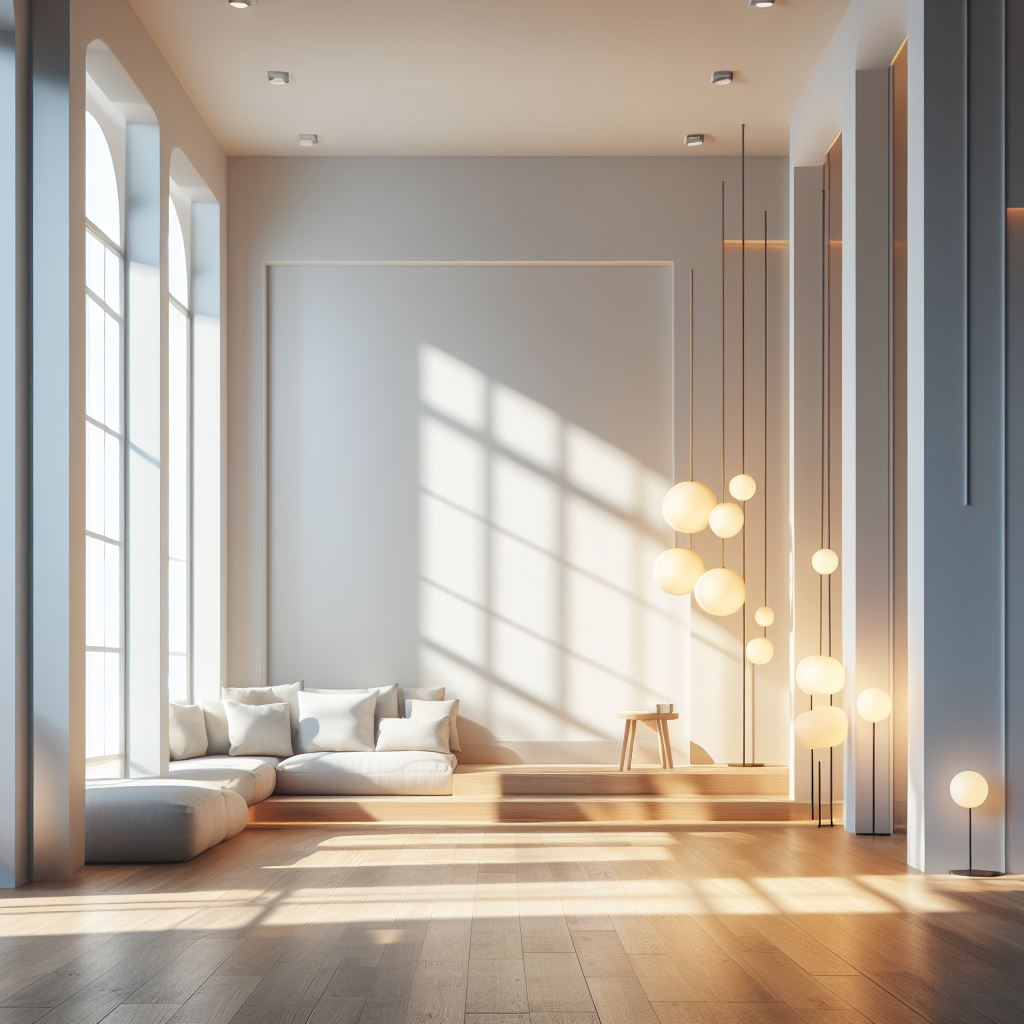The Dance of Light and Shadows
Indoor lighting is a delicate art. It’s the intricate choreography between light and shadows that establish the ambiance of a room, evoking a spectrum of emotions and feelings. The science behind this is rooted in our evolutionary biology. Our eyes, having adapted to sunlight, are more sensitive to the blue and green portions of the spectrum during the day. But at night, in the low light, our eyes become more responsive to the red and yellow portions.
More Than Just Functionality
Lighting serves more purposes than just functionality. It has the ability to drastically alter the character and mood of a room. A soft glow from a table lamp can create an intimate, welcoming atmosphere, similar to the calming effect of a campfire, while a brightly lit room can evoke a sense of energy and liveliness, stimulating the brain’s production of serotonin, the hormone associated with mood elevation.
Planning Your Lighting
When strategizing the lighting for a room, its purpose is paramount. A living room, for example, may require a blend of ambient, task, and accent lighting. Ambient light, the primary source of illumination, should mimic natural daylight as closely as possible due to its positive effect on mood and productivity. Task light focuses on specific areas like reading corners, where a light temperature of 4000-5000K is recommended for reduced eye strain. Accent light, on the other hand, highlights artwork or architectural features, and can be adjusted according to personal preference.
Layering and Intensity
Layering different types of light adds depth and dimension to a room. Utilizing a dimmer switch, for example, allows variations in intensity, enabling a shift from a high-energy, brightly lit room to a softly illuminated space perfect for relaxation. Studies show that exposure to bright light enhances alertness and performance, while softer light promotes relaxation and a sense of calm.
The Role of Shadows
Shadows play a crucial role in indoor lighting design. They add texture and depth, infusing a sense of intrigue and drama. To optimize shadows, contemplate the direction and intensity of your light sources. For instance, positioning a light source near a textured wall can cast captivating shadows that add to the room’s character. Shadows, besides being visually appealing, also enhance our perception of depth and space.
The Power of Contrast
Contrast is a vital component of lighting design. A room with uniform lighting can feel flat and uninteresting. On the other hand, a space with varied lighting – some areas brightly lit, others cast in shadow – can feel dynamic and inviting. It’s the principle of chiaroscuro, a term derived from the Italian words “light” and “dark.” The interplay of light and dark adds volume and a sense of three-dimensionality to spaces.
Choosing Light Colors
Lastly, consider the color of your light. Different light sources produce different colors, from the warm yellow of incandescent bulbs to the cool white of LEDs. The color of your light can affect the mood of a room, so choose carefully. Warmer colors tend to create a cozy, relaxing atmosphere, while cooler colors stimulate alertness. These effects have been substantiated by numerous studies in the field of chromotherapy.
Lighting: A Journey of Discovery
Lighting is a journey of discovery. It’s about experimenting with different light sources, playing with shadows, and observing how they interact. It’s an art that, when mastered, can transform any indoor space into a place of beauty and intrigue. As we continue to learn more about how light affects our mood, productivity, and overall well-being, the science of indoor lighting continues to evolve, offering exciting new possibilities for the spaces we inhabit.
